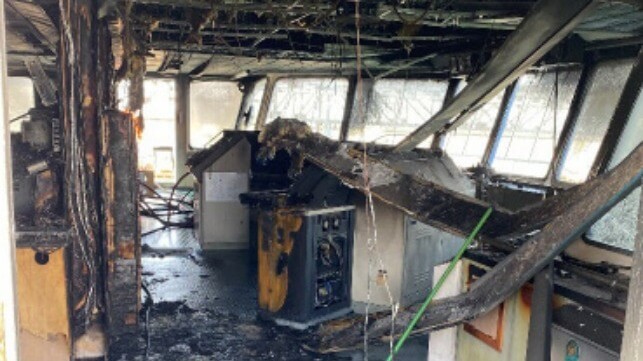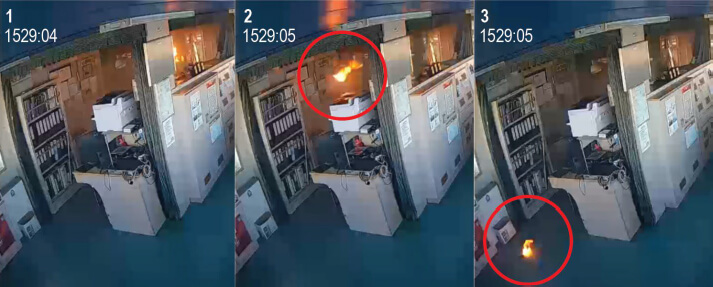Charging Lithium-Ion Batteries Caused Fire Destroying Tanker’s Bridge

While there has been a lot of attention to the dangers of transporting battery-powered vehicles and lithium-ion batteries and devices as cargo, the National Transportation Safety Board is now warning crews about the dangers of unsupervised charging of lithium-ion batteries. The NTSB working with the U.S. Coast Guard and the Bureau of Alcohol, Tobacco, Firearms and Explosives (ATF) determined that a fire that destroyed the bridge of a tanker docked in Louisiana last year was caused by a lithium-ion battery-powered radio that exploded while charging on an unattended bridge.
The investigation narrowed the case of the fire aboard the oil tanker S Trust (106,000 dwt) to the batteries and specifically the batteries for a handheld radio that had been left in a charger. Docked at the Genesis Port Allen Terminal, the vessel was offloading and the bridge was unattended when the fire began. By the time the captain became aware of the fire, it had already spread and ultimately destroyed the navigation, communication, and alarm systems. They estimate the damage at $3 million.
The S Trust, registered in Liberia and with a crew of 23, docked at the terminal on November 11, 2022, and was offloading high-sulfur fuel oil. At about 1530 on November 13, the master of the vessel working in his office one deck below the bridge noticed that the closed-circuit camera feed from the bridge was not showing and went to investigate. It was only then that they discovered a fire on the bridge. The report notes that as a control station, SOLAS does not require the bridge to have fire or smoke detectors.
The master recounted to the investigators that he believed the fire was coming from the communications table but the smoke was too thick for him to enter the bridge. He ordered the fuel operations suspended and electric power turned off to the bridge. Fire crews fought the fire from both bridge wings and at 1550 the fire was declared out. No one was injured and the damage was contained to the bridge.

Sequence of images captured from the bridge camera shows the explosion and a burning object landing on the deck (NTSB)
The investigators reviewed video footage from the bridge and determined at 1527 there was an orange flash followed by smoke coming from the communications table. The smoke quickly increased and two minutes later there was a second orange flash and an object flew from the area landing on the deck and continuing to burn. By 1536, nine minutes after the first flash, ash and the heat from the fire prevented further images from the camera on the bridge.
The subsequent investigation found the ship had 20 UHF handheld radios, including 14 batteries with lithium-ion cells and another 13 with nickel-metal hydride cells. There were also 16 chargers on the ship. Shifting the debris, investigators found the remains of a lithium-ion battery in a charger but its two cells were not found. The analysis rules out the other electronic devices or batteries as the cause of the fire.
NTSB in its report concludes a thermal runaway occurred in the cells which is an incident where the cells overheat and combust. The cells might have been damaged during use, defective, or not certified. Overcharging can also be a cause of the event which is a chemical reaction fire that they warn can reach 1,100 degrees F.
The recommendations include avoiding unsupervised charging, keeping the batteries and chargers away from heat sources, and disposing of damaged batteries. The report states that should a lithium-ion battery fire occur, crews can attempt to extinguish the fire with water, foam, CO2, or other dry chemical or powdered agents, or allow the pack to burn in a controlled manner. They however warn that nearby cells may also experience thermal runaway.
